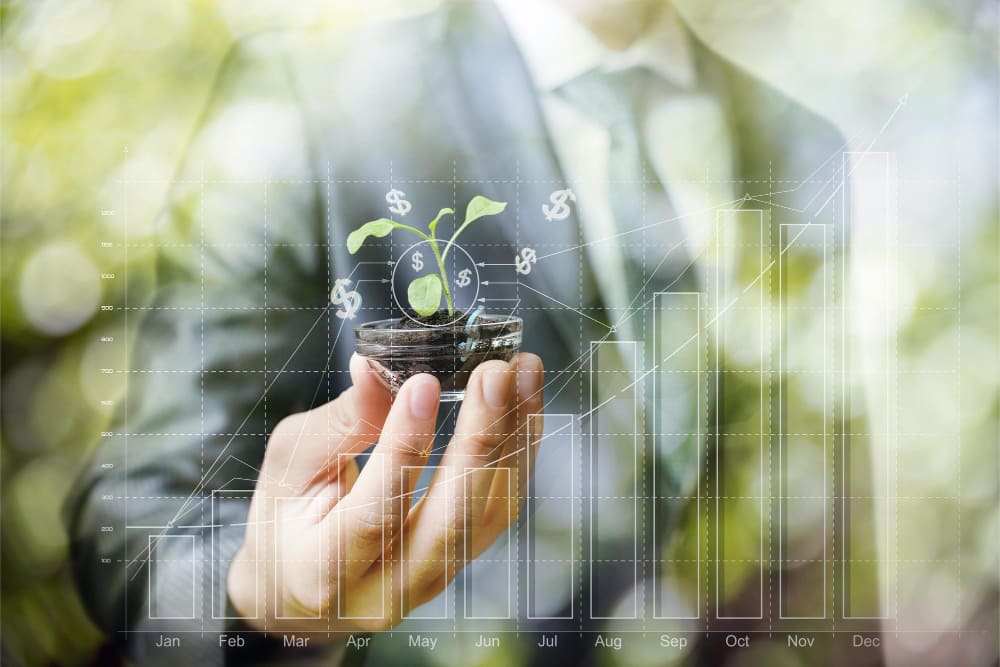
Promising options for investing in the Green Economy in the coming years
The transition to a low-carbon economy is no longer confined to institutional agendas or environmental commitments. It has become an integral part of the business logic and the most significant investments in the global market.
The intersection between the green economy and structured investments is shaping new capital allocation theses, and savvy investors are already positioning themselves to capture value in this landscape.
With a clean energy matrix, abundant natural resources, and a leading role in strategic commodities, Brazil has the potential to play a central role in this new economic cycle.
The challenge lies in filtering the best opportunities amid the growing volume of sustainable products in the market, and making choices anchored in fundamentals rather than trends.
Below, we highlight financial instruments with the greatest return potential in the context of the green economy for the coming years:
Green bonds are debt instruments issued specifically to finance projects with a positive environmental impact, such as renewable energy, energy efficiency, clean urban mobility, and the restoration of degraded areas.
In addition to directly contributing to sustainability, these assets offer an attractive risk-return profile, especially in regulatory environments that favor the ecological transition.
In Brazil, the green bonds market is growing rapidly, with issuances by major banks, infrastructure companies, and BNDES itself.
Sustainability-focused ETFs (such as iShares Global Clean Energy) offer diversified exposure to companies involved in solar and wind energy, batteries, biotechnology, and decarbonization solutions, with liquidity and low operational costs.
This type of asset allows investors to position themselves in a long-term thesis focused on energy transition and clean technologies, without relying on a single issuer or project.
It is a way to capture the growth potential of an entire sector that is likely to expand, even in volatile macroeconomic environments.
ESG-focused investment funds with an active thesis continue to gain traction, especially among institutional investors. Fundamental analysis, combined with environmental, social, and governance criteria, creates more robust portfolios for the medium and long term.
These funds avoid companies with regulatory risks or environmental liabilities, prioritizing those that can combine operational efficiency with genuine social and environmental commitment, rather than just marketing narratives.
Private Equity Funds and infrastructure funds focused on the green agenda are among the most promising in the Brazilian capital markets. With a longer investment horizon, they finance transformative projects: solar and wind farms, electric mobility, circular waste chains, green hydrogen production, and regenerative agriculture.
Many of these funds still benefit from tax incentives and attract family offices, pension funds, and independent asset managers seeking real returns with low correlation to traditional assets.
Assets related to environmental preservation and emissions offsetting, such as carbon credits and conservation funds, are rapidly being integrated into the portfolios of major investors.
The growth of regulated and voluntary carbon markets, combined with the pressure for decarbonization across supply chains, is expected to drive the appreciation of these assets.
Furthermore, they create opportunities for financial products backed by preserved areas, biodiversity, and ecosystem services.
The green economy is reshaping entire supply chains. Investors who can anticipate this shift, with the right criteria, strategy, and instruments, will have a competitive advantage in the upcoming cycles.
Besides mitigating risks associated with climate change and regulation, these investments offer sustainable returns in every sense: economic, reputational, and long-term viability.
Would you like to build a structured investment portfolio focused on green assets and sustainable innovation?
The team at Upside Investment can help you identify the best opportunities and develop a strategy aligned with your profile and goals.
 por Agência de Marketing Digital
por Agência de Marketing Digital
 Upside Investment © 2025
Upside Investment © 2025